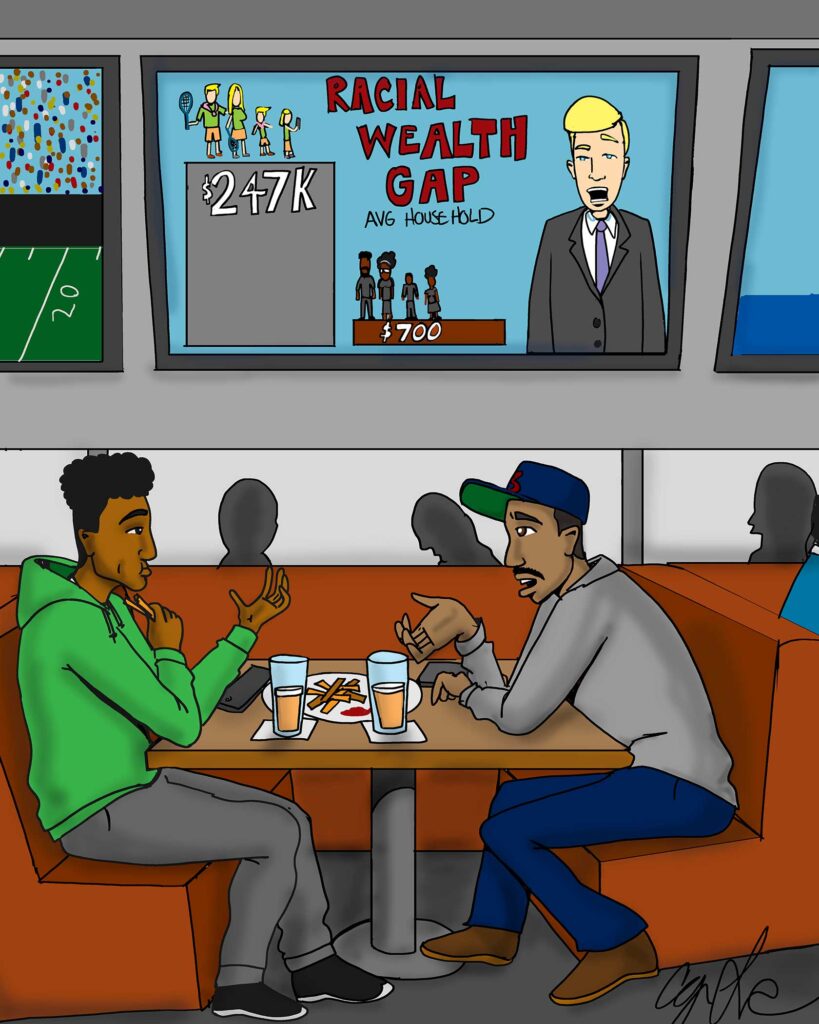
MIT Professor Karilyn Crockett has declared “there’s no bigger challenge than the racial wealth gap.” She’s right about that.
One needs to look no further than the “Color of Wealth,” the study the Federal Reserve Bank of Boston released ten years ago, which found median household wealth in the metro area was about $247,000 for whites and $700 for U.S.-born Blacks. That’s a Grand Canyon of a gap. It was found to be narrower for Caribbean Blacks, who reported assets of $12,000 — still only 5% of white wealth — but other researchers have questioned whether an adequate number of Caribbean households were surveyed.
Crockett, a professor of urban history, public policy and planning with Dorchester roots in community activism, isn’t just talking about this immense challenge. She is helping oversee an updated and expanded study by the Federal Reserve, surveying 5,000 households in metro Boston and gateway cities like Brockton, Worcester and Springfield. To complement that research, Crockett organized a series of three hackathons on the racial wealth gap that engaged community activists in searching the archives of local college libraries for possible solutions.
Each of the all-day hackathons on spring Saturdays, which began in 2023 and concluded earlier this month, had a different focus: housing, education and, combined, jobs and entrepreneurship. Selecting those topics made sense. Most Americans derive wealth from homeownership, education is one of the country’s social elevators, entrepreneurship is the other, and well-paying jobs can provide the income to buy a home and, perhaps, seed a small business.
It is clear a single thrust won’t close the wealth gap. Crockett cited a study that found if the biggest problem of Black-owned businesses was suddenly solved and miraculously they acquired all the assets and capital they need to level the playing field, it would take 200 years to wipe out the wealth gap. Obviously, a strategic combination of approaches is required to get the job done.
A theme that emerged from the hackathons, Crockett said, was participants’ yearning for security and stability, that is, the capacity to stay in their communities as housing prices escalate. Their ideas along those lines included cooperative housing, land trusts and worker-owned cooperative businesses. But in terms of building wealth, land trusts limit the appreciation that homeowners can reap, and some housing coops do. Worker-owned businesses could have the potential for greater and wider returns.
Another idea considered in the second hackathon was finding ways to rope in white-controlled resources to help build Black wealth, possibly from well-endowed suburban churches. But participants noted, with notable exceptions in the past, willing congregations tend to go only so far, making donations but limiting their engagement with Black communities in Boston.
At this stage of history, it would be helpful if the Black community and its allies did some open-ended brainstorming, like at the hackathons, to conceive creative ideas for closing the racial wealth gap. This exercise needs to consider tapping and leveraging resources from within and without the Black community.
Some ideas to close the wealth gap are already being floated and tested.
To expand homeownership, the Federal Home Loan Bank of Boston has piloted an initiative that provides eligible homeowners of color in New England with $50,000 to cover downpayments and closing costs when buying a home. “Lift Up Homeownership” is a “special purpose credit program” for economically disadvantaged groups allowed under the Equal Credit Opportunity Act of 1974.
When it comes to business opportunities, there is some evidence that banks are less reluctant to lend to Black entrepreneurs who are seeking to open franchises. Bankers may feel more comfortable knowing the track record of local franchises in the same chain and the defined structure of their operations. With sound management, franchises can build wealth. Just look at what Clayton Turnbull has done with his coffee and donut shops locally.
With a $250,000 gift from Omar and Raynya Simmons from the Boston area, the International Franchise Association has established a six-month accelerator program for members of underrepresented groups and residents of economically disadvantaged communities who are interested in owning a franchise. Last year, two people from Boston participated in the Franchise Ascension Initiative.
The Federal Reserve Bank of Boston’s update of the “Color of Wealth” was originally due next year but may take longer. It would be best if Mathematica, the research organization conducting the new study, recommended programs and policies to narrow the racial wealth gap.
One old idea worth reviving is Black folks pooling their money at whatever level there is group trust. Berry Gordy started the record label that became the Motown powerhouse in the 1960s and 1970s with a loan from his family, whose members contributed to a pool that relatives could tap to start a business.
For Black wealth to catch up with white wealth, Black wealth must grow faster than white wealth. Closing the gap won’t mean taking away from white Americans and leaving them with fewer assets. The dynamic, risk-taking economy will continue to grow. With the racial wealth gap levelling out, this will be a more stable country. Let the ideas for getting there flow.
Ronald Mitchell
Editor and Publisher, Bay State Banner







